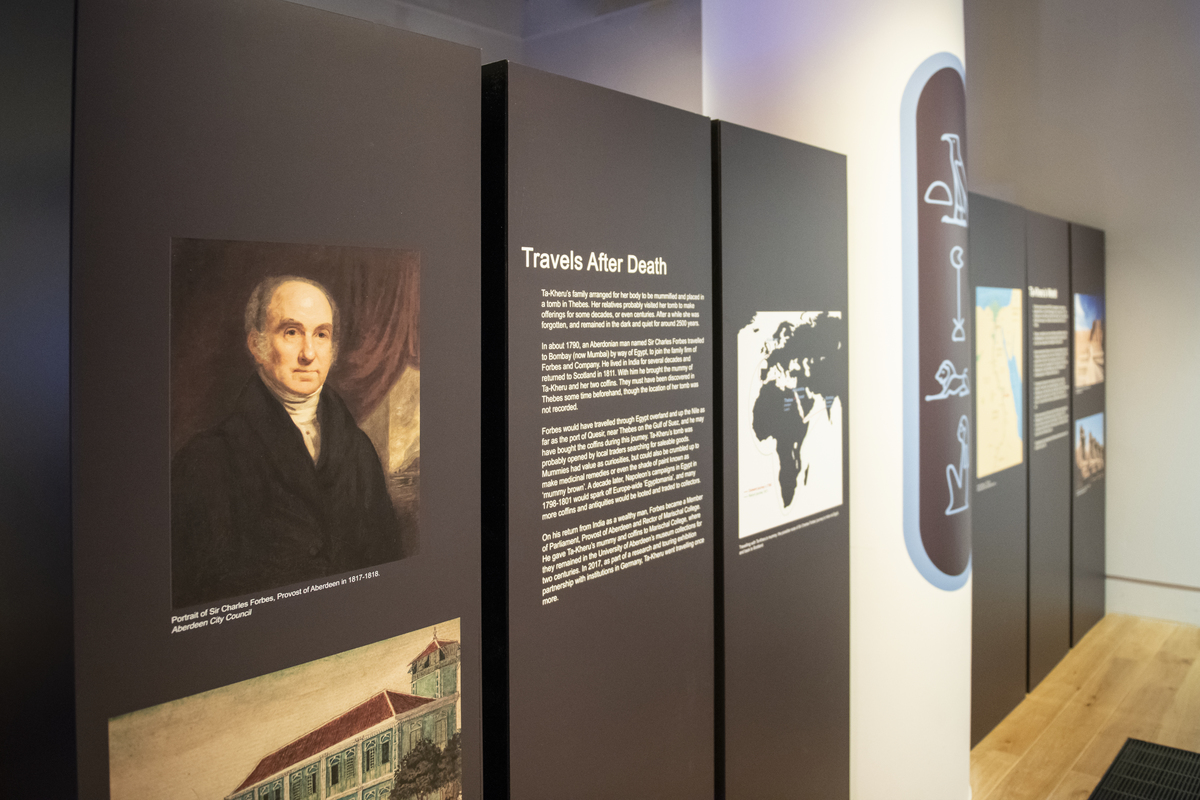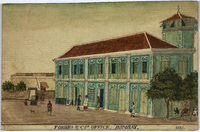Travels After Death
Ta-Kheru’s family arranged for her body to be mummified and placed in a tomb in Thebes. Her relatives probably visited her tomb to make offerings for some decades, or even centuries. After a while she was forgotten, and remained in the dark and quiet for around 2500 years.
In about 1790, an Aberdonian man named Sir Charles Forbes travelled to Bombay (now Mumbai) by way of Egypt, to join the family firm of Forbes and Company. He lived in India for several decades and returned to Scotland in 1811. With him he brought the mummy of Ta-Kheru and her two coffins. They must have been discovered in Thebes some time beforehand, though the location of her tomb was not recorded.
Forbes would have travelled through Egypt overland and up the Nile as far as the port of Quesir, near Thebes on the Gulf of Suez, and he may have bought the coffins during this journey. Ta-Kheru’s tomb was probably opened by local traders searching for saleable goods. Mummies had value as curiosities, but could also be crumbled up to make medicinal remedies or even the shade of paint known as ‘mummy brown’. A decade later, Napoleon’s campaigns in Egypt in 1798-1801 would spark off Europe-wide ‘Egyptomania’, and many more coffins and antiquities would be looted and traded to collectors.
On his return from India as a wealthy man, Forbes became a Member of Parliament, Provost of Aberdeen and Rector of Marischal College. He gave Ta-Kheru’s mummy and coffins to Marischal College, where they remained in the University of Aberdeen’s museum collections for two centuries. In 2017, as part of a research and touring exhibition partnership with institutions in Germany, Ta-Kheru went travelling once more.



